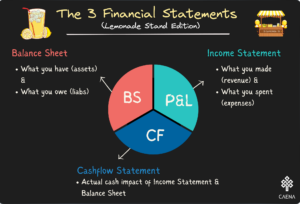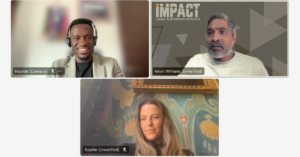Get help for your early-stage rounds but don’t outsource your entire startup fundraising to an adviser
Elon Musk hired multiple investment banks including Morgan Stanley as advisers on his ongoing acquisition of Twitter so it must be a good idea to hire an adviser for early-stage fundraising right?
Brokers, investment bankers, lead advisers… different nomenclature for different shades of the same group of people — financial intermediaries or middlemen. Whatever they prefer to be called, they are expensive, very expensive. That is a given. In certain circumstances, these advisers are worth every penny of what they charge their clients, in other instances, hmm…
As an early-stage founder raising your first round be it pre-seed or seed, you’re most definitely overwhelmed with the fundraising process — investor prospecting, warm intros, cold emails, teasers, pitch decks, business models, due diligence, financial models and lots more. The list of documents and steps is enough to make any founder reconsider their life’s choices and jump at any promised shortcuts.
1/ Founders - EVEN if you use a banker of placement agent, YOU still need to reach out personally.
— Fred Destin (@fdestin) August 31, 2022
Now, let me say it's really bad signalling to use a banker, except in France for some reason. But assume you do use one, here's the stupid stuff they do:
Investors have an issue with founders delegating their fundraise to advisers. This thread from prominent VC Fred Destin covers points when they do their job very badly. That is, they are extremely bad at delivering the value you hired them for. To understand if, how and when to use advisers, it is important to understand what they do and what value they can bring to the table. So what exactly does a very good adviser / broker do? Short answer: help with all steps of the fundraising process.
Demystifying the venture financing process
- Fundraising Strategy: a very good first step is to have a plan. Like everything else in business, execution often deviates from the plan but you are better off with a fundraising plan than without one. How much should you raise? From who? How do you go about raising the funds? Should you even be raising externally?
- Should you raise externally?: if you can do without raising externally, don’t. Raising external capital is time-consuming and should NOT be the default option for every startup founder. Bootstrapping is a valid option and so many multi-billion dollar companies have been built this way. Bootstrapping is hard but it is an option.
- When should you raise your first round? this should not be complicated as well. If you are going to raise external financing, wait as long as you can before doing this. De-risk the business, achieve as much traction as possible then bring onboard external investors. Pre-seed investors consider anything from idea stage to revenue generating startups. Logically, the more traction you have, the better your chances. It’s worth noting that investors are partial, very very partial to reputation so if you hear of fundraising rounds based on ideas on a napkin, know for certain that it isn’t an average entrepreneur but one that ticks a lot of the boxes not often talked about – previous startup exit, work experience in big tech, ex-VC, ivy league graduate and more.
- Fundraise amount: How much should you be raising? The simplest answer is this the least amount you need to get your business to its next proof point or milestone. Let’s assume you have a working prototype or MVP, the next milestones would be to develop a full product, launch and start generating revenue.
- From who: This is potentially the most critical part of your fundraising plan as it is multi-faceted. There are two parts to this question:
- What type of investor: VCs get the most attention and air time so most founders believe they are the sole source of external capital. However, the success rate for startups raising from VCs is as low as one percent. According to a research by Harvard Business Review, For every 100 pitches that VCs receive: 28 get to pitch, 10 get to see a Partner, only 4.8 get to DD stage, 1.7 receive a term sheet AND 1 gets funded. In reality, there are better options at the pre-seed and seed stages than VCs – angel investors, accelerators and grants to name just a few. Your task here is to conduct a honest assessment of your business and identify the right type of investors for your business.
- Which investors do you fit their thesis: what is a thesis? Simply it is a set of principles that guide an investor’s activities – what they will invest in and what they won’t touch. If your business is not a fit with the investment thesis of any investor you approach, it’s simple you will not get a meeting and at times not even a response.
- This is a source of frustration for both parties – investors say startups waste their time by approaching them when it’s clearly out of scope and startups complain investors are often not clear enough about their thesis. Beyond the squabbles, your task here is to conduct a detailed investor analysis, cast your net wide then refine to clearly identify the thesis for investors and ONLY approach those where there’s a match. If it sounds like a mind-numbing exercise that’s because it is. That’s why Caena has built an investor matching tool so founders can identify the right investors in less than 5 minutes rather than weeks of analysis.
- Should you raise externally?: if you can do without raising externally, don’t. Raising external capital is time-consuming and should NOT be the default option for every startup founder. Bootstrapping is a valid option and so many multi-billion dollar companies have been built this way. Bootstrapping is hard but it is an option.
- Fundraising preparation: There is a reason investment bankers are one of the most highly paid people on earth. The fundraising process is complex and cumbersome. With a strategy in place, you still need to prepare documents – loads and loads of them. Teasers, pitch decks and financial models. This is one of the steps in the process that is hard, very hard for first time founders raising for the first time to complete without seeking help. It is very rare for a founding team to have the skills to prepare a great pitch deck, cold email template and financial model. As such, it makes sense to hire consultants or advisers for this part of the process. That said, even hiring for document preparation can be expensive. Need a financial model? That’s £1,500 and it will take you one month. Need to know how to write to investors, that is £3,000. A well-designed pitch deck is upwards of £1,000. Unless you’re building a financial model with Caena’s automated tool which enables founders generate projections in less than 30 minutes.
- How to approach investors: once you have an investor shortlist based on your fundraising strategy, the next step is to approach these investors. There are two broad approaches – cold calls and through warm introductions. For early-stage investing, there is very little data to go by so investors work based on relationships and trust. You are more likely to get a meeting with VCs if you know someone on the team or if you’ve been referred by someone they trust. That said, there are many downfalls to warm introductions and a lot of angel investors and VCs are being more deliberate in taking pitches on their websites and giving opportunities to founders outside their immediate circles. No matter your approach, you stand a better chance of going further in the process with a narrow, focused approach rather than “spray and pray.”
In-person IMO
— George Le (@ifgeorgecan) September 7, 2022
But for the 21st century way, warm email intro from a founder who has already received an investment from the target investor.
Barring the above, just ask, not doing so will guarantee you WONT get a meeting. No one's startup has been destroyed by asking
GL to all
With a detailed understanding of what a startup fundraising process entails, should you hire an adviser? For parts of the process – yes but as the startup founder, you should be in control of the entire process. An adviser who does it all for you is tempting but it is hard to find one that is amazing across the entire process AND is affordable.
The main reason we are building Caena, is to remove inefficiencies from the process and make it easier for founders to access capital. Our financial modelling and investor matching tools are automating investor prospecting and document preparation. We are making founders’ lives easier by saving you time and money. Join thousands of startups that trust Caena with their fundraising and get started for free.





